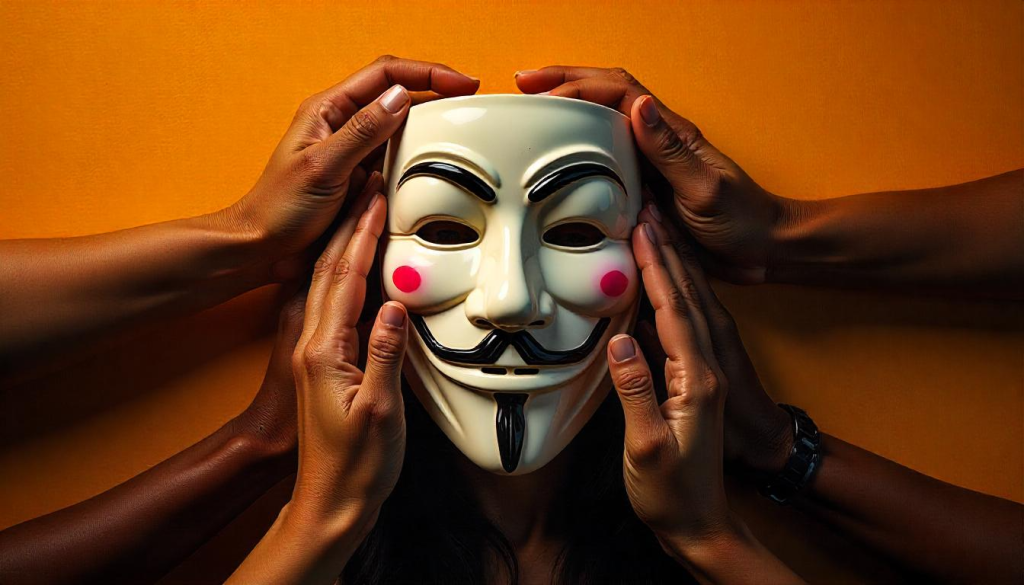The group known as Anonymous has long captured the world’s attention with its iconic Guy Fawkes mask and its bold cyber-activism. But in today’s digital world where almost everything happens on social platforms, one pressing question remains: Is Anonymous active on social media? In this article, we’ll break down how Anonymous interacts with platforms like Twitter, Facebook, and YouTube, whether the accounts you see are legitimate, and how their presence influences activism, digital freedom, and internet culture.

What Is Anonymous?
Anonymous is not a single individual or a fixed group. It is a loosely affiliated, decentralized collective of hackers and activists (often called “hacktivists”). Anyone who supports their ideology and takes part in online actions can consider themselves part of Anonymous. They’ve been involved in various operations over the years—ranging from attacks on government websites to campaigns against corporations and even involvement in geopolitical issues.
Is Anonymous on Social Media?
Yes, but not in the way you might think. Unlike a traditional organization with verified accounts and a single official voice, Anonymous exists across multiple social media platforms under numerous unofficial identities. There are no “official” accounts, but rather a wide range of Anonymous-branded profiles, channels, and pages run by individuals who align themselves with the group’s ideals.
1. Twitter Presence
Twitter is one of the most active hubs for Anonymous-related activity. Several accounts use names like @YourAnonNews, @YourAnonCentral, or variations thereof. These pages often share hacking news, political opinions, and calls to action related to global events. But there’s a catch — there’s no guarantee these accounts are run by the same people, or even by legitimate Anonymous supporters. Since Anonymous has no leadership, anyone can create an account and use the imagery or slogans associated with the group.
Tip for readers: If you come across an Anonymous page on Twitter, look at its history, follower count, and the type of content it posts before trusting it.
2. Facebook and Instagram
Facebook and Instagram have more restrictions than Twitter when it comes to anonymous and controversial content. Still, Anonymous-themed pages exist, mostly used to share news or activism-related memes. These pages are typically run by individuals or groups who sympathize with Anonymous rather than being representative of the collective as a whole. In some cases, these accounts are removed or banned for violating platform rules, especially when linked to activism that borders on illegal hacking activity.
3. YouTube and Video Platforms
Anonymous has used YouTube extensively in the past to release “Operation” videos, calling for action on topics like corruption, censorship, and human rights violations. The videos usually feature the classic Anonymous figure: a man in a suit with a digitally altered voice and the Guy Fawkes mask. Much like other platforms, YouTube channels linked to Anonymous are run independently, and new ones constantly emerge as older channels are taken down or go inactive.
4. Reddit and Forums
Reddit is another place where Anonymous supporters gather, particularly in subreddits like r/Anonymous or related threads in activism communities. While Reddit allows a higher degree of anonymity, most discussions are based on public information, speculation, or grassroots planning—not direct hacking operations. 4chan and similar imageboards are historically linked with the birth of Anonymous. These forums played a major role in the group’s rise during the early 2000s.
How to Tell if an Anonymous Social Media Account Is Legit?
Since Anonymous isn’t centralized, no account can claim to be “official.” However, some profiles have gained credibility over the years due to consistent messaging, large followings, and involvement in major events (such as the Arab Spring, Occupy Wall Street, or campaigns against Russian aggression in Ukraine).
Here’s how to gauge credibility:
-
Look at the content: Is it aligned with Anonymous’ known views—anti-censorship, anti-corruption, pro-human rights?
-
Check engagement: Are people interacting meaningfully with the posts?
-
Search history: Was the account active during major Anonymous operations?
But remember, even high-follower accounts can be hijacked, faked, or operated by trolls. So, always stay critical.
Why Does Anonymous Use Social Media?
Despite being known for hiding identities, Anonymous uses social platforms to:
-
Spread awareness of political and social injustices
-
Mobilize support for operations (e.g., #OpIran, #OpRussia)
-
Communicate updates about their campaigns
-
Recruit like-minded people to share or take action (in peaceful or digital protest forms)
Because the mainstream media doesn’t always cover every movement, Anonymous uses the internet to reach audiences directly.
Challenges of Being Anonymous Online
While social media gives Anonymous a voice, it comes with risks:
1. Account Impersonation
Anyone can create an “Anonymous” page. This leads to confusion, conflicting messages, and even government-led attempts to discredit the movement.
2. Platform Censorship
Accounts are often banned, shadowbanned, or flagged for promoting “harmful” behavior—even if their message is peaceful activism.
3. Security and Surveillance
Using social media exposes Anonymous activists to potential surveillance, tracking, or infiltration by law enforcement or rival groups.
Final Thoughts: Anonymous Is Online, But Always Anonymous
So, is Anonymous on social media? Yes—but not in the way a normal organization would be. There’s no official Twitter or YouTube channel. Instead, there are countless pages and users inspired by the Anonymous ideology, each contributing to the movement in their own way. Whether you support or oppose Anonymous, one thing is certain: their digital presence continues to influence how we view activism, internet freedom, and power. As social media evolves, so will Anonymous—and its many masks will remain scattered across the internet, never belonging to just one face.
u r doing great work. keep it up guys .. really appreciate it